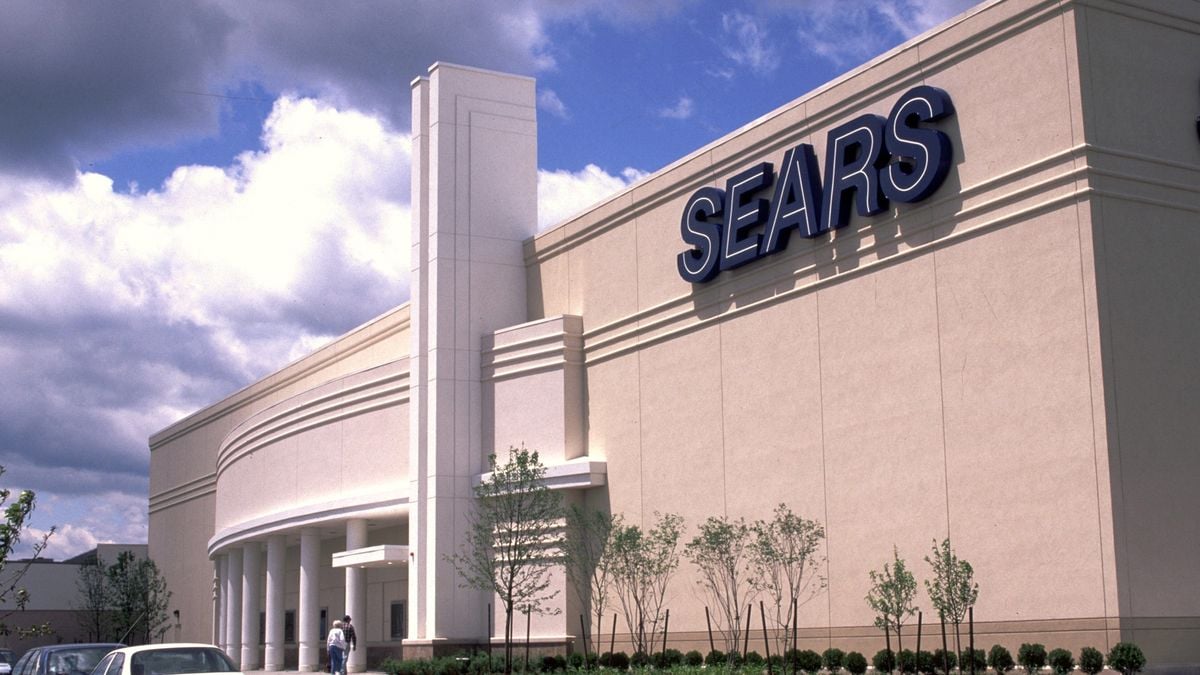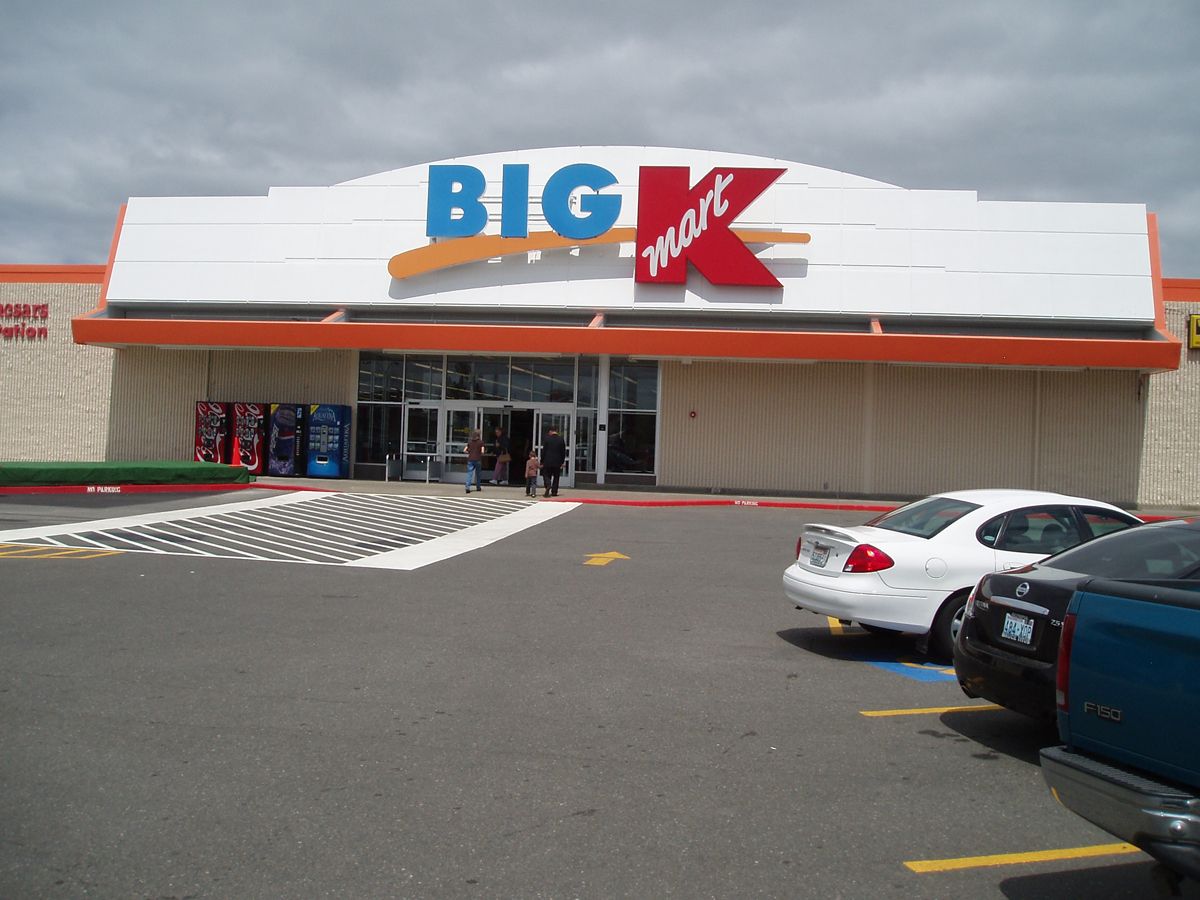Sears is a shell of its former self. So why is it reopening some stores?
2024.01.26

A Sears store exterior. From a high of nearly 3,500 stores together in 2005, Sears and Kmart now have fewer than 20 stores.
Permission granted by Transformco
Sears and Kmart once dominated the retail landscape.
When the companies merged in 2005, they had nearly 3,500 stores. For context, that’s more stores than Target, Macy’s and Lowe’s currently operate. But years of business missteps have reduced the once mighty retailers to small shells of their former glory.
On the cusp of another new year, the companies continue to slide further into irrelevance. As of early December, Transformco, the parent of both brands, now operates fewer than 20 U.S. stores: 13 Sears locations and two Kmarts. The company also has Kmart locations in Guam and the Virgin Islands.
With such a small footprint, it came as a surprise to many that Sears quietly opened a store at Burbank Town Center in Los Angeles County in mid-October. The mall-based location had closed last December, according to media reports.
Sears also reopened a store in November in Union Gap, Washington, at the Valley Mall. The location had closed late last year, according to local media reports. The Valley Mall store is listed as open on the Sears website and the location also has a Facebook page.
“It makes little sense for Sears to open stores,” Erik Gordon, a professor with the Ross School of Business at the University of Michigan, told Retail Dive in an email. “A Sears store creates no excitement, won't be a destination store, and will have to be staffed by people who will mostly stand around talking to each other and who now are costly.”
Reaction to the California location reopening was mixed. The store’s return didn’t generate much excitement beyond nostalgia, according to a KTLA report, which also noted that only two of the three levels of the nearly 130,000-square-foot building were open to shoppers.
Transformco did not respond to Retail Dive’s request for comment on the decision to reopen the California store, nor did it respond to a request to confirm how many stores it currently operates.
Retail industry analysts have been predicting the end of Sears and Kmart for years. But somehow they’ve been able to — or chosen to — hang on. So why is Sears opening stores again?
A focus on lease rights
Nick Egelanian, founder and president of consulting firm Siteworks, said there’s likely only one reason Sears reopened the Burbank store or would move to reopen any store in the future — its valuable real estate.
“There is zero chance that Sears or Kmart is, or will be, opening any stores for any reason other than to protect lease rights that are, or would be, in jeopardy without the actions they are taking,” Egelanian said.
In 2015, the now-defunct Sears Holdings Corp. sold 235 Sears and Kmart stores to Seritage Growth Properties, a real estate investment trust. Sears also sold its 50% joint interests in joint ventures with Simon Property Group, General Growth Properties and The Macerich Company, which together at that time held an additional 31 Sears Holdings properties. Macerich this past June announced that it acquired the remaining 50% interest from Seritage in five former Sears stores in Connecticut, California, Oregon, Arizona and New Jersey.
“Eddie Lampert led the demise of Sears. He believed his skills as a hedge fund manager qualified him to be a merchant prince but he was more of a merchant jester."
Erik Gordon
A professor with the Ross School of Business at the University of Michigan
“An examination of the store itself reveals scant merchandising and old tired finishes,” Egelanian said. “This indicates that the store is being operated for some tactical reason relating to the real estate. It would be pure speculation on my part to try to guess what the exact reason is, but it almost certainly is to protect value and validity of its leasehold or other property rights.”
Perhaps unsurprisingly, year-over-year visits to all Sears and Kmart stores fell by double digits nearly every month from January through September, according to data from foot traffic analytics firm Placer.ai. But that data, however, should be considered in context, since the company continues to close far more stores than it opens, R.J. Hottovy, Placer.ai’s head of analytical research, told Retail Dive.
“Is this something where they’re trying to test for changes to the store format, changes to the merchandise assortment? It’s still a little bit unclear, to be honest, what they’re doing with the reopening,” Hottovy said of the Burbank store reopening.
Gordon was unequivocal about what — and who — drove the downfall of Sears.
“Eddie Lampert led the demise of Sears,” Gordon said. “He believed his skills as a hedge fund manager qualified him to be a merchant prince but he was more of a merchant jester. He engineered and re-engineered the company's finances, more to his advantage than for the benefit of the company, according to some critics, despite putting a lot of his fortune on the line.”
Retail real estate leasing terms are often intertwined in traditional malls. If an anchor or major tenant closes within the shopping center, it can have a domino effect on other retailers. Some retailers may have clauses that allow them to change the terms of their lease if an anchor closes.
“One other reason that could explain the opening is that it has opened as a concession to the owner of the shopping center to help prevent other store closings as part of a multi-property real estate negotiation,” Egelanian said.
Additionally, retailers that choose to reopen a recently closed store still see a possible path to success in physical locations, according to Sam Vise, CEO and co-founder of software company Optimum Retailing, which helps retailers improve their in-store experience.
“Look at Toys R Us, for example. They’re expanding into a range of new retail locations that lean more into the travel industry, which aligns well with consumers’ increased interest in experiences and travel over traditional retail spending,” Vise said. “Coming out of the pandemic, more and more consumers realized just how much they missed shopping in physical stores, and that has translated well for many brands who now have the tailwinds to expand their brick-and-mortar presence.”
Brand recognition diminished
In February 2018, Sears Holdings reported operating 1,002 full-line and specialty retail Kmart and Sears-branded stores. But nearly six years later, the company’s store count is at about a dozen locations.
With such a small retail footprint, it’s unlikely that Transformco can sustain itself financially or operationally, Sudip Mazumder, senior vice president and retail industry lead at Publicis Sapient, told Retail Dive.
Additionally, with a small footprint, it’s important for stores to carefully curate their product mix, Vise said.
“You have to make your stores very localized and specific to the customers most likely to shop there; for example, a small store in a downtown urban area might focus on selling essentials and grab-and-go products that customers traveling on foot and public transportation are likely to need,” Vise said. “Smaller stores also mean a smaller product selection, so every item sold needs to have a higher margin. Conversely, a large store in a suburban area knows their customers are likely driving in cars to visit that store with the intention of buying groceries and bulkier items."
Under Lampert, Sears sold many of its iconic brands, like Craftsman, Kenmore and DieHard. Lands End spun off from Sears Holdings in 2014. Echoing comments from local residents on social media, Mazumder noted that empty shelves and a lack of name brands send the wrong message if customers decide to visit the newly reopened store.
While some other retailers and brands have been acquired and relaunched over the years — like Overstock’s acquisition of some of Bed Bath & Beyond’s assets, including its intellectual property — that’s unlikely to happen with Sears of Kmart, Mazumder said.

A Kmart storefront
Permission granted by Transformco
“I think both Sears and Kmart do still hold some brand power,” Vise said. “Sears is known for a long history of selling appliances, kitchen gadgets, and tools, so it wouldn’t be totally unexpected if, for example, a hardware retailer were interested in acquiring the Sears name to capitalize on that strong brand recognition that still exists to expand their offerings and reach new customers.”
But reopening stores to serve the interests of investors over customers could backfire, Mazumder added.
While the reopening of the Burbank store did generate some foot traffic and attention “as people reminisce about earlier times and fond memories, it will be an uphill battle for them to generate enough revenue with such gaping holes in their assortment to survive,” Mazumder said. “With each passing day, their brand recognition and value diminish as such a failed attempt at resurrection only leaves a bad taste in consumers' minds.”

















 Visitor Registration
Visitor Registration Booth Application
Booth Application